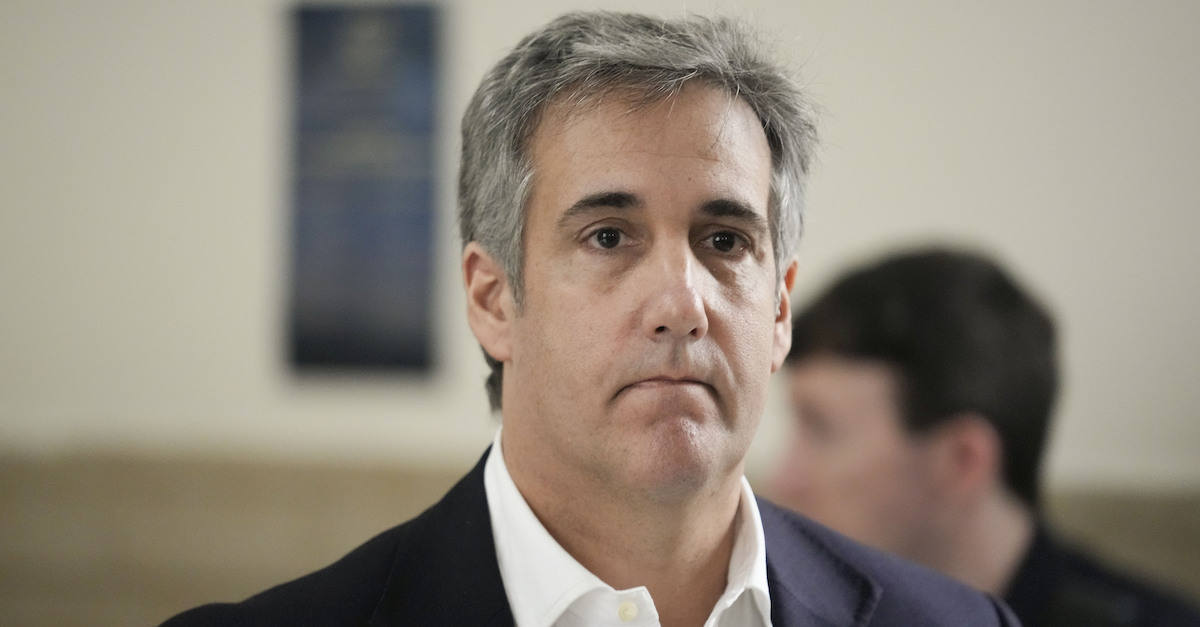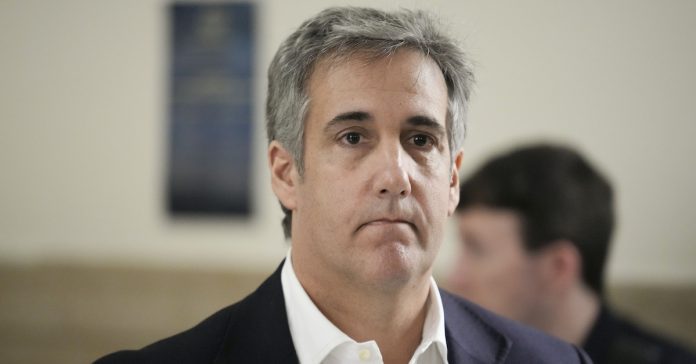
Michael Cohen returns to New York Supreme Court on Oct. 25, 2023, to testify against Donald Trump in his his ex-boss’ civil fraud trial (AP Photo/Seth Wenig)
It’s never a good thing when a judge tells an attorney to prove that cases cited in a motion are real or else face potential sanctions, but that is the situation one of Michael Cohen’s lawyers is in right now.
Michael Cohen, the 57-year-old former fixer for Donald Trump who served time behind bars for campaign finance violations, bank fraud and tax evasion, has been trying to convince U.S. District Judge Jesse Furman that the supervised release aspect of his sentence should end early.
Cohen attorney David M. Schwartz submitted a letter motion on Nov. 29 arguing that there were three examples in 2022 of the U.S. Court of Appeals for the Second Circuit affirming the “early termination of supervised release.”
There was just one problem (or three problems): “As far as the Court can tell, none of these cases exist,” Judge Furman wrote Tuesday.
In a footnote, the judge pointed out that he is “apparently not alone in being unable to find these cases.” Cohen attorney E. Danya Perry submitted a filing on Dec. 8 which, also in a footnote, said she couldn’t “verify those citations” either.
Judge Furman called up the Second Circuit clerk to see if the appellate court had these cases on record. The clerk “found no record of any of the three decisions and reported that the one listed docket number (for Ortiz) is not a valid docket number,” Furman wrote.
As a result, the judge ordered Schwartz to “provide copies of the three cited decisions to the Court” by Dec. 19, next Tuesday. If the attorney can’t prove those cases exist, Furman said, Schwartz should spend his time instead on explaining why he shouldn’t be sanctioned, how nonexistent cases came to be cited in the motion, and whether Michael Cohen himself was involved in “drafting or reviewing the motion”:
In light of the foregoing, Mr. Schwartz shall, no later than December 19, 2023, provide copies of the three cited decisions to the Court. If he is unable to do so, Mr. Schwartz shall, by the same date, show cause in writing why he should not be sanctioned pursuant to (1) Rule 11(b)(2) & (c) of the Federal Rules of Civil Procedure, (2) 28 U.S.C. § 1927, and (3) the inherent power of the Court for citing non-existent cases to the Court. See, e.g., Mata v. Avianca, Inc., No. 22-CV-1461 (PKC), 2023 WL 4114965 (S.D.N.Y. June 22, 2023). Any such submission shall take the form of a sworn declaration and shall provide, among other things, a thorough explanation of how the motion came to cite cases that do not exist and what role, if any, Mr. Cohen played in drafting or reviewing the motion before it was filed. The Court will reserve judgment on Mr. Cohen’s motion pending the above submission.
Notably, the Mata v. Avianca, Inc. case Furman cited was a case where attorneys were fined for citing nonexistent cases that were the AI-generated “gibberish” results of their ChatGPT use.
David Schwartz did not immediately respond to Law&Crime’s request for comment.
Have a tip we should know? [email protected]

